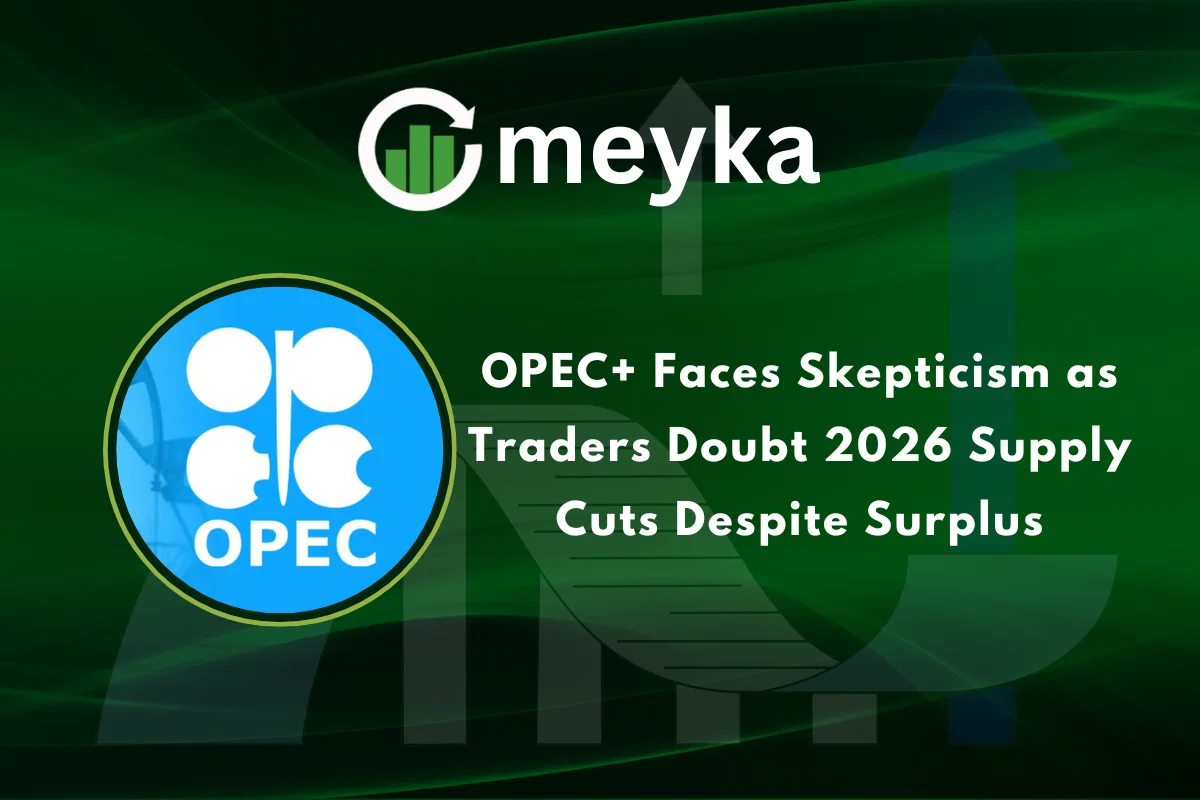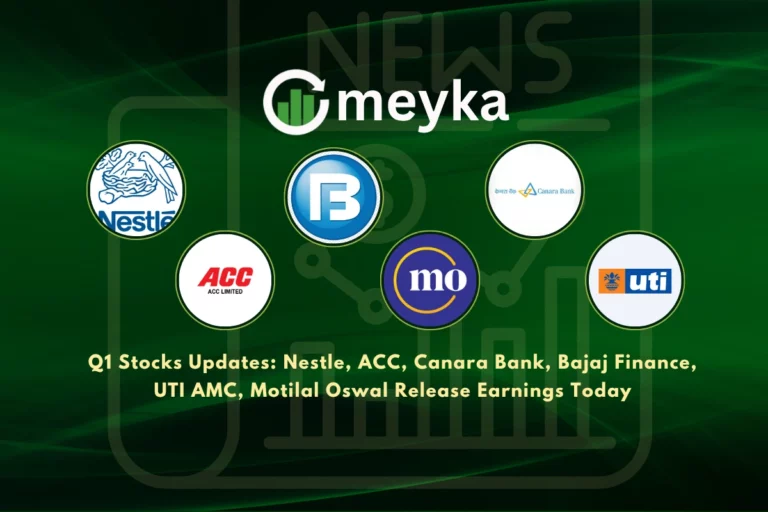OPEC+ Faces Growing Skepticism as Traders Doubt 2026 Supply Cuts Despite Surplus
The global oil market is entering a period of intense uncertainty, and OPEC+ is once again at the center of the conversation. Although the alliance has announced major supply cuts for 2026 to stabilize prices, traders around the world remain doubtful. Many believe that rising non-OPEC supply, slowing global demand, and shifting investment flows will weaken the impact of the planned cuts, even as the market continues to show signs of surplus.
This growing skepticism reflects deeper concerns about the future of oil pricing, the balance of supply and demand, and how global investors are shifting strategies in the broader stock market, including energy shares, AI-driven companies, and commodity-focused portfolios.
Global Oil Surplus Raises Questions Over OPEC+ Strategy
Recent data from market analysts and major institutions shows that the oil market is still oversupplied. Even after previous rounds of production cuts, inventories remain higher than expected across the U.S., Europe, and Asia. According to recent market evaluations, this persistent surplus has weakened the credibility of OPEC+’s upcoming 2026 strategy.
Traders argue that when the market is already carrying excess barrels, future supply cuts may not be enough to rebalance prices. Some expect that the alliance may eventually need deeper or more prolonged cuts to prevent another price slump.
At the same time, geopolitical tensions continue to add volatility. Conflicts in the Middle East, uncertainty surrounding elections in major economies, and shifting trade routes have created unpredictable supply patterns. All of these factors contribute to the skepticism surrounding OPEC+’s 2026 plan.
Non-OPEC Output Continues to Grow, Challenging Market Control
One of the biggest challenges OPEC+ faces is the rapid growth in non-OPEC oil production. The United States, Brazil, Guyana, and Norway are expanding output through new offshore fields, shale investments, and enhanced drilling technologies.
Even if OPEC+ reduces supply, many analysts believe that these non-OPEC producers will simply fill the gap.
This has led to widespread doubt in the trading community. Many traders question the group’s ability to influence prices in the way it once did. As a result, oil futures reflect caution, signaling that investors are preparing for a market where OPEC+’s control is gradually weakening.
Increasingly, investors are turning toward diversified energy portfolios, including renewable energy stocks and AI stocks, which are benefiting from advancements in automation, energy analytics, and smart grid technologies. This shift further highlights the declining confidence in traditional oil-market dominance.
Demand Outlook Weakens as Global Economy Slows
While supply concerns dominate the headlines, demand is also becoming a major issue in global energy markets. Economic growth across Europe and China is slowing, reducing industrial activity and transportation fuel consumption.
In the United States, consumer demand remains strong, but not strong enough to offset slower growth internationally.
As electric vehicle adoption accelerates and governments push for cleaner energy alternatives, long-term oil demand forecasts are shifting downward. This is one more reason traders doubt that OPEC+ supply cuts alone will be enough to sustain higher prices in 2026.
Industry analysts warn that unless demand begins to recover significantly, even dramatic production cuts may not keep the market balanced.
Oil Markets and Investor Sentiment in the Stock Market
The uncertain oil outlook is influencing global equity markets, especially energy-related stocks. Investors who once relied on oil price stability to evaluate energy companies are now taking a more cautious approach.
Energy stocks linked to OPEC+ countries have seen fluctuating investor confidence. Meanwhile, companies focused on renewables, advanced battery technology, and digital automation continue to attract capital.
This shift highlights a growing trend in stock research: investors are seeking flexible, future-proof sectors rather than relying solely on traditional commodity markets.
Furthermore, the rise of AI stocks is reshaping investor expectations. AI-driven predictive tools in trading, risk management, and energy analytics are helping investors interpret oil-market signals more accurately, reducing reliance on traditional OPEC+ forecasts.
Why Traders Doubt the Reliability of 2026 Supply Cuts
Despite OPEC+ announcing long-term production cuts, many traders doubt the group’s ability to fully commit to the plan. Historically, several members have struggled with compliance. Political tensions, domestic economic pressure, and the need for revenue often push countries to exceed production quotas.
This lack of uniform discipline has repeatedly undermined OPEC+’s goals.
Traders also believe that as 2026 approaches, global market conditions may force some countries to prioritize economic growth over production discipline. If even one major producer increases output, it can weaken the entire strategy.
Additionally, uncertainty around sanctions, political shifts, and regional conflicts makes long-term planning difficult.
Because of these concerns, futures markets show only limited confidence in OPEC+’s ability to enforce the planned cuts in 2026.
Technological Shifts Are Changing the Energy Landscape
Energy markets today are not influenced solely by supply and demand. Technology is playing a growing role in shaping investor decisions, pricing models, and long-term forecasting.
AI-powered systems can now analyze oil-market changes in real time, identify hidden patterns, and predict supply-chain disruptions. This provides traders with greater clarity, though it sometimes contradicts OPEC+ announcements.
Meanwhile, advancements in renewable energy technology, including solar, wind, hydrogen, and battery storage, are creating alternatives that were not feasible a decade ago.
This technological evolution further weakens OPEC+’s long-term influence, contributing to trader skepticism.
Looking Ahead: Will OPEC+ Regain Market Confidence?
For OPEC+ to regain credibility, analysts believe the group will need to deliver clearer, more transparent communication, and maintain strict production discipline. Without consistent action, confidence will continue to erode.
The 2026 cuts may still provide some stabilization if global demand improves and non-OPEC supply growth slows. However, traders remain cautious, suggesting that the oil market is entering a new era, one defined by diversification, technology, and evolving global demand.
The next year will be crucial in determining whether OPEC+ can restore influence or whether energy markets will shift toward a more decentralized structure.
FAQs
Traders question whether all OPEC+ members will comply with long-term production cuts, especially with rising non-OPEC output and a global oil surplus.
Prices may be shaped by global economic growth, technological shifts, geopolitical tensions, and OPEC+ countries’ ability to maintain production discipline.
Energy uncertainty pushes investors toward diversified portfolios, including renewables, technology companies, and AI-driven sectors.
Disclaimer:
The content shared by Meyka AI PTY LTD is solely for research and informational purposes. Meyka is not a financial advisory service, and the information provided should not be considered investment or trading advice.






